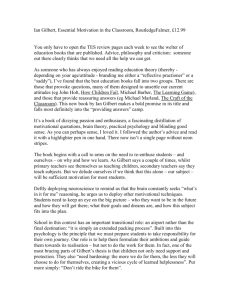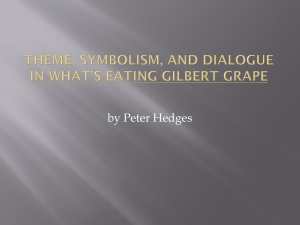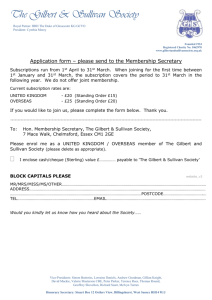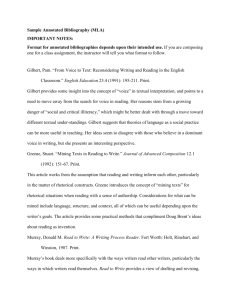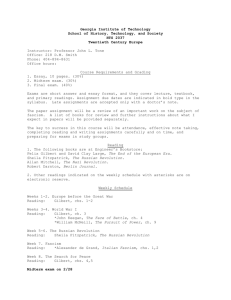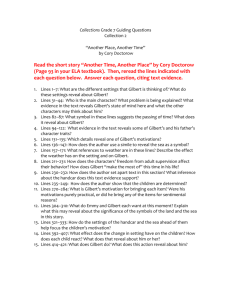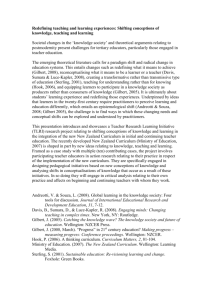7.72 9.18.06 Anteroposterior axis
advertisement
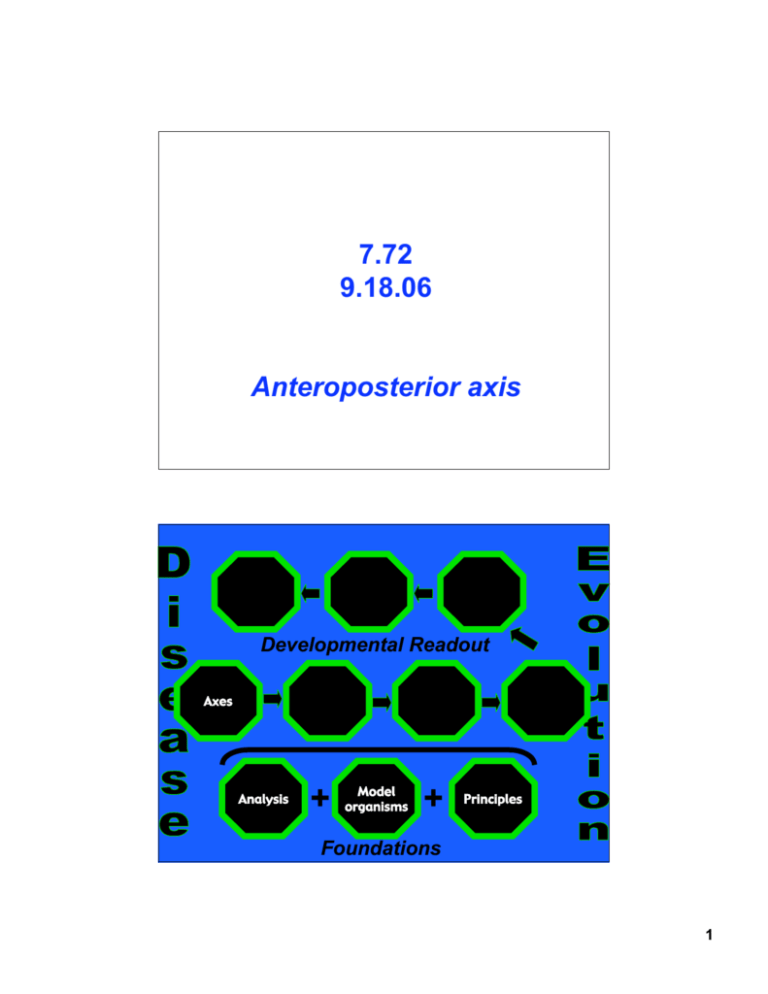
7.72 9.18.06 Anteroposterior axis Human issues Organ formation Stem cells Developmental Readout Growth control Axes Analysis + Model organisms Axon guidance + 3D structure Principles Foundations 1 What is the A/P axis? 1 anterior posterior Anteroposterior axis 2 Germ layer rearrangement 2 ventral ectoderm >> epidermis posterior (spinal cord) V mesoderm endoderm anterior ecto (forebrain) dorsal ectoderm >> nervous system posterior (trunk) D mesoderm anterior (head) mesoderm ~50,000+ cells/ early gastrula H. Sive, MIT 2006 3 3 Late gastrula A anterior ectoderm anterior mesoderm anterior endoderm D V posterior ectoderm posterior mesoderm posterior endoderm P Reorganization of germ layers during gastrulation and A/P axis formation: general schematic H. Sive, MIT 2006 When does the A/P axis form? 4 4 Fate maps Stern et al 5 Dawid, 2004 5 6 Mouse A/P axis present by implantation Takaoka et al, 2006 How does A/P axis form? “The organizer” 6 7 organizer Donor embryo Host embryo Organizer transplant 8 host embryo donor organizer has induced a second embryo made mostly from host cells Conjoined twins after organizer transplant: organizer is an inducing center 7 9 Twinned frog embryos Relationship to D/V patterning? 8 10 In Drosophila, A/P axis forms independently of D/V axis. A P Bicoid protein gradient H. Sive MIT 2006 11 animal pole 2 - 500+ cells 500+ cells LO mesoderm HI vegetal pole Nodal gradient Low nodal >> mesoderm 2. Mesoderm determination (High nodal >> endoderm) 9 H. Sive MIT 2006 12 animal pole 2 - 500+ cells ~5,000 -50,000 cells V LO D HI vegetal pole An/Veg Nodal gradient > Germ layers D/V Nodal gradient Changing nodal gradient with time helps determine different D/V mesodermal types 13 H. Sive MIT 2006 animal pole 500+ cells 2- 4,000 cells D V 1. Dorsal vegetal pole + !-catenin low nodal/ Smad 2. Mesoderm 4,000+ cell stage = 3. Dorsal mesoderm = future muscle dorsal mesoderm: !-cat + low nodal (via Smads) activates MyoD transcription 10 14 H. Sive, MIT 2006 animal pole 1 - 4,000 cells 10,000 cells + V BMP signaling promotes ventral fates vegetal pole = V BMP gradient via inhibitors from organizer 50,000 cells D Organizer promotes dorsal fates late blastula D early gastrula Organizer refines D/V axis 15 Gilbert Figure 10.32 Localization of Chordin mRNA in the Xenopus organizer 11 Separable head and trunk organizers 16 Gilbert Figure 10.40 Regional Specificity of Induction Demonstrated by Implanting Different Regions (Color) of the dorsal mesendoderm 12 17 Gilbert Figure 10.41 Regionally Specific Inducing Action of the Dorsal Blastopore Lip Genes, factors 13 18 Anterior BMPs Wnts FGF Retinoic acid trunk organizer antiBMPs antiwnts antiRA head organizer Posterior Signaling molecules involved in A/P patterning: mid- to late gastrula: Xenopus schematic H. Sive, MIT 2006 19 P A Early gastrula Mid-neurula Niehrs, 2004 14 20 Niehrs, 2004 21 Gilbert Figure 10.36 Late expession of Xwnt8 ventralizes mesoderm and prevents Head Formation in the Ectoderm 15 22 Gilbert Figure 10.37 Expression of the Wnt inhibitor Frzb in future head. Overexpression leading to enhanced head formation. Organizers in other vertebrates 16 23 Organizer position in various vertebrates Stern et al, 2006 24 Gilbert Figure 8.4(1) Cleavage patterns 17 25 chicken 18 26 Gilbert Figure 11.12 Discoidal Cleavage in a Chick Egg 27 Gilbert Figure 11.14(1) Cell Movements of the Primitive Streak of the Chick Embryo 19 28 29 Gilbert Figure 11.14(2) Cell Movements of the Primitive Streak of the Chick Embryo Gilbert Figure 11.14(3) Cell Movements of the Primitive Streak of the Chick Embryo 20 30 Gilbert Figure 11.15(1) Migration of Endodermal and Mesodermal Cells Through the Primitive Streak 31 Gilbert Figure 11.20(1) Induction of a New Embryo by Transplantation of Hensen’s Node 21 32 33 Gilbert Figure 11.21(2) Gene Expression in the Primitive Streak Gilbert Figure 11.22 Possible Contribution to Chick Neural Induction by the Inhibition of Bmp Signaling 22 mouse 34 Inner cell mass >> embryo Gilbert Figure 11.28 Mouse cleavage 23 35 Mouse gastrulation 36 Beddington et al, Fig 1/ mouse development 24 37 Beddington et al, Fig 2/ mouse development 38 Gilbert Figure 11.39(1) Axis formation in the Mouse 25 39 40 Gilbert Figure 11.39(2) Axis formation in the Mouse Gilbert Figure 11.40 Expression of BMP Antagonists in the Mammalian Node 26 human/ primate 41 Inner cell mass Gilbert Figure 11.41 Human embryo 27 42 43 Gilbert Figure 11.33(1) Amnion Structure and Cell Movements During Human Gastrulation Gilbert Figure 11.33(2) Amnion Structure and Cell Movements During Human Gastrulation 28 44 Human twinning 45 Conjoined twins 29
